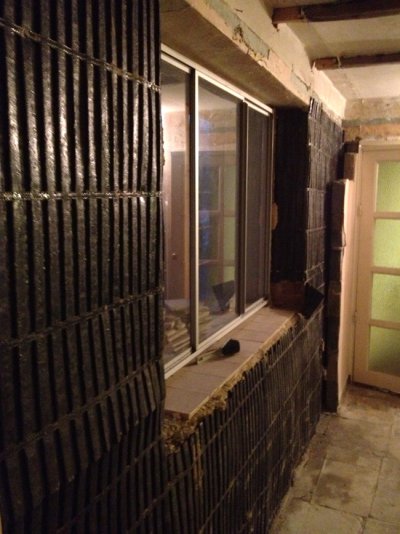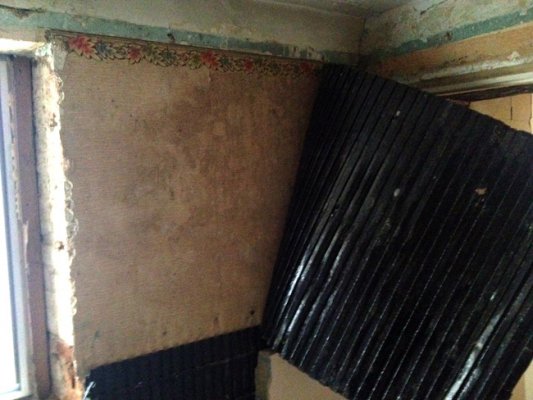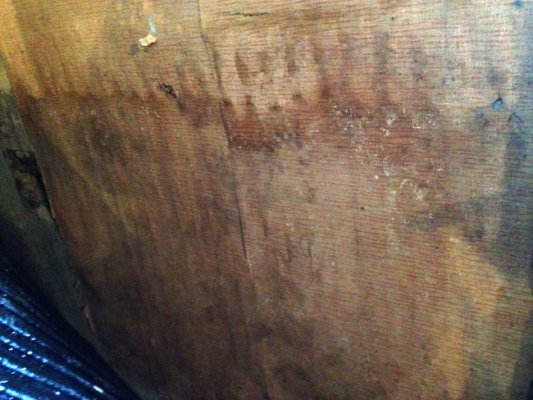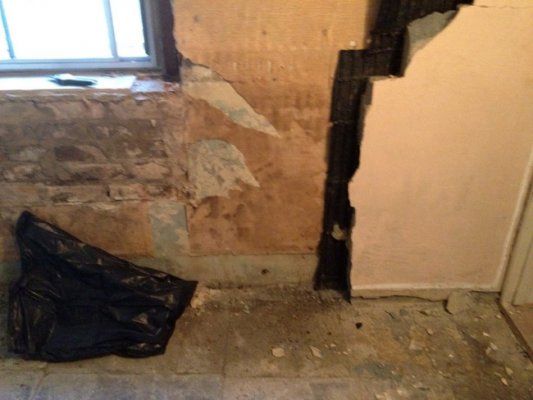Happy New Year All, a little bit of advice/opinions required!
We are still trying to remedy some damp issues in our living room which remain despite reducing the exterior ground level, constructing a French drain, repointing exteriorly in lime, removing chipboard and bitumen floor coverings (to find nice old flags) and removing several layers of plasterboard, cement render and 1970's Newtonite sheeting from the walls.
The front wall (ashlar stone, rubble interior, solid wall c.1700) remains damp in places at low levels on the inside. Now, while I expect this is probably the result of condensation, we had suspected that there may have been an interior 'skin' built inside this wall (as the wall is 9 inches thicker downstairs than upstairs and plastered in very flat gypsum).
We removed the plywood and plasterboard 'boxing' that had been constructed around the window reveal the other day and, as expected found, a single skin light weight, thermalite style breeze block wall built from floor to ceiling with a token cavity (breached by debris) between it and the inside of the original wall.
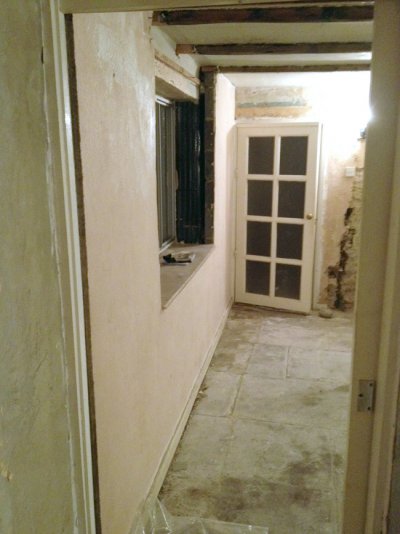
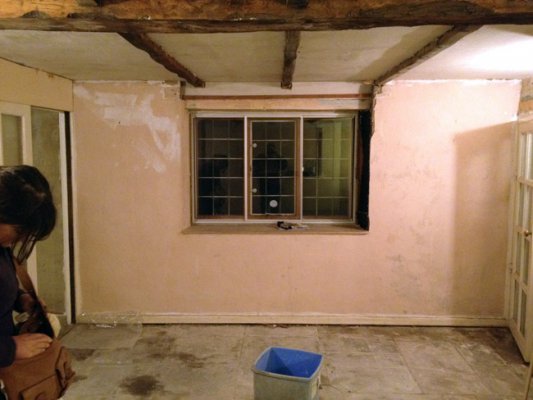
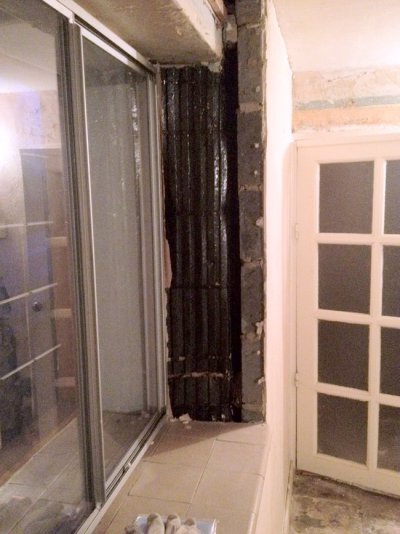
Obviously this must have been an attempt to both damp proof and insulate the wall and, whilst not very 'traditional, I was inclined to leave it in situ for its additional thermal performance. However, on closer inspection, the inside of the original exterior wall has been lined with Newtonite tanking sheets (I only know its Newtonite as the application instructions were stuffed in the cavity!) inside the cavity. The wall behind the tanking seems to still have old lime plaster on it. Based on the experience of removing this material from other walls it will only trap moisture behind it and within the fabric of the exterior wall (and may explain why the plinth is so wet and covered in algae on the outside).
The block work wall finishes just below the original lath and plaster ceiling and should come away without damage to the ceiling.
My initial reaction is to take down the block work wall, remove the tanking entirely, assess the state of the wall and repair the lime plaster/replaster as required, leaving the wall functioning much as originally intended, this will also add an additional 9 inches to the room.
Does this seem like a sensible course of action? Will the thermal performance of the wall be significantly reduced without the blockwork skin or will the difference be negated by the (hoped for) reduced moisture content of the wall. What would others advise? Any thoughts would be appreciated.
We are still trying to remedy some damp issues in our living room which remain despite reducing the exterior ground level, constructing a French drain, repointing exteriorly in lime, removing chipboard and bitumen floor coverings (to find nice old flags) and removing several layers of plasterboard, cement render and 1970's Newtonite sheeting from the walls.
The front wall (ashlar stone, rubble interior, solid wall c.1700) remains damp in places at low levels on the inside. Now, while I expect this is probably the result of condensation, we had suspected that there may have been an interior 'skin' built inside this wall (as the wall is 9 inches thicker downstairs than upstairs and plastered in very flat gypsum).
We removed the plywood and plasterboard 'boxing' that had been constructed around the window reveal the other day and, as expected found, a single skin light weight, thermalite style breeze block wall built from floor to ceiling with a token cavity (breached by debris) between it and the inside of the original wall.



Obviously this must have been an attempt to both damp proof and insulate the wall and, whilst not very 'traditional, I was inclined to leave it in situ for its additional thermal performance. However, on closer inspection, the inside of the original exterior wall has been lined with Newtonite tanking sheets (I only know its Newtonite as the application instructions were stuffed in the cavity!) inside the cavity. The wall behind the tanking seems to still have old lime plaster on it. Based on the experience of removing this material from other walls it will only trap moisture behind it and within the fabric of the exterior wall (and may explain why the plinth is so wet and covered in algae on the outside).
The block work wall finishes just below the original lath and plaster ceiling and should come away without damage to the ceiling.
My initial reaction is to take down the block work wall, remove the tanking entirely, assess the state of the wall and repair the lime plaster/replaster as required, leaving the wall functioning much as originally intended, this will also add an additional 9 inches to the room.
Does this seem like a sensible course of action? Will the thermal performance of the wall be significantly reduced without the blockwork skin or will the difference be negated by the (hoped for) reduced moisture content of the wall. What would others advise? Any thoughts would be appreciated.

